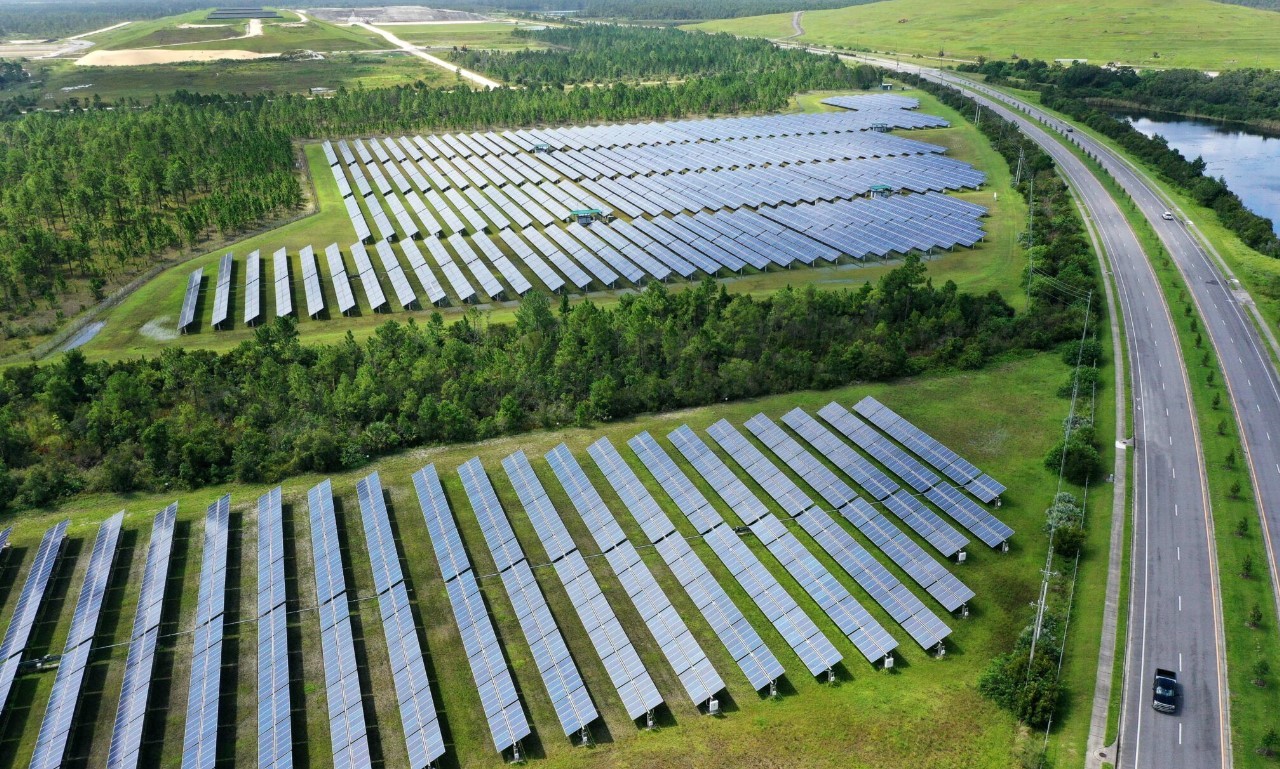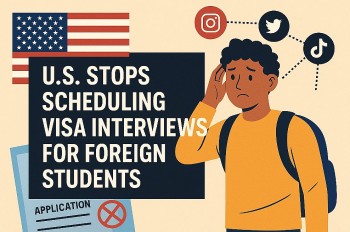How Many International Students Are in the U.S: Top Countries, Fields of Study, New Policy
 Fact Check: New U.S. Policy on Terminating International Students’ Legal Status Fact Check: New U.S. Policy on Terminating International Students’ Legal Status |
 Trump vs. Harvard: The Real Reason Behind the Ban on International Students Trump vs. Harvard: The Real Reason Behind the Ban on International Students |
 |
| How many international students are in the U.S |
Total Number of International Students in the U.S.
According to the Institute of International Education's (IIE) Open Doors Report for the 2023–2024 academic year, the United States hosted 1,126,690 international students, marking a 7% increase from the previous year and setting a new record high.
These students represent approximately 5.6% of the total U.S. higher education enrollment and contribute significantly to the economy. In the 2023–2024 academic year, international students contributed $43.8 billion to the U.S. economy and supported over 378,000 jobs.
Top Countries of Origin
India has become the leading country of origin for international students in the U.S., surpassing China for the first time since 2009. The top countries sending students to the U.S. in 2023–2024 were:
-
India: 331,602 students (29.4% of total international students)
-
China: 277,398 students (24.6%)
-
South Korea: 43,149 students (3.8%)
-
Canada: 28,998 students (2.6%)
-
Vietnam: 23,157 students (2.1%)
Notably, eight of the top 25 places of origin, including Bangladesh, Colombia, Ghana, India, Italy, Nepal, Pakistan, and Spain, reached all-time highs in student numbers.
Fields of Study
International students in the U.S. predominantly pursue degrees in Science, Technology, Engineering, and Mathematics (STEM) fields. According to the Open Doors Report:
-
Graduate Students: 502,291 international graduate students were enrolled, an 8% increase and an all-time high.
-
Optional Practical Training (OPT): 242,782 students participated in OPT, a 22% increase from the prior year.
-
Undergraduate Students: 342,875 international undergraduates were enrolled, a slight 1% decrease from the previous year.
Approximately 70% of full-time graduate students in electrical engineering and computer science are international students, highlighting their significant contribution to these fields.
Top U.S. Institutions Hosting International Students
Several U.S. universities have large international student populations. While specific rankings may vary, institutions such as New York University, Northeastern University, Columbia University, Arizona State University, and the University of Southern California are among the top hosts. These universities offer diverse programs and support services that attract students worldwide.
Recent U.S. Visa Policy Changes
In 2025, the U.S. government implemented several policy changes affecting international students:
-
Visa Interview Pauses: The State Department temporarily halted new student visa interviews to implement expanded screening procedures, including thorough reviews of applicants' social media accounts.
-
Visa Revocations: The administration announced plans to "aggressively revoke" visas for Chinese students, particularly those linked to the Chinese Communist Party or studying in sensitive fields like AI and chip technology.
-
Institutional Impacts: Harvard University faced a temporary revocation of its certification to admit foreign students, though a federal judge blocked this move shortly after.
These policy shifts have raised concerns among educational institutions and international students regarding the stability and openness of U.S. higher education.
Post-Graduation Opportunities
International students in the U.S. have several pathways to gain work experience after graduation:
-
Optional Practical Training (OPT): Allows students to work in their field of study for up to 12 months; STEM graduates may extend this period by an additional 24 months.
-
H-1B Visa: A non-immigrant visa that allows U.S. companies to employ foreign workers in specialty occupations.
-
Employment-Based Green Cards: Some graduates may qualify for permanent residency through employment-based categories.
These opportunities enable international graduates to contribute to the U.S. economy and gain valuable professional experience.
Global Trends and Future Outlook
While the U.S. remains a top destination for international students, recent policy changes and global competition have influenced student preferences. Data from Studyportals indicates a significant decline in interest in U.S. study programs between January and April 2025, with search volumes dropping by 50% compared to 2023 levels.
Countries like the United Kingdom, Australia, and Canada are becoming increasingly attractive alternatives due to more favorable immigration policies and post-study work opportunities.
Frequently Asked Questions (FAQs)
Q1: How many international students are currently in the U.S.?
A: As of the 2023–2024 academic year, there are 1,126,690 international students in the United States.
Q2: Which countries send the most students to the U.S.?
A: India and China are the top two countries, accounting for over half of all international students in the U.S.
Q3: What fields do international students typically study?
A: Most international students pursue degrees in STEM fields, including engineering, computer science, and mathematics.
Q4: How do recent U.S. policies affect international students?
A: Recent policies have introduced stricter visa screening processes and have led to concerns about visa revocations, particularly affecting students from China.
Q5: What are the post-graduation work options for international students?
A: International students can apply for OPT, H-1B visas, or employment-based green cards to work in the U.S. after graduation.
 Top 40 Best American Scholarships for International Students in 2025 Top 40 Best American Scholarships for International Students in 2025 Are you interested in getting a degree in the US? What kinds of scholarships do you want? This page ranks the Top 40 Best US ... |
 Top 15 Best Engineering Scholarships For International Students Top 15 Best Engineering Scholarships For International Students Do you intend to study engineering at the university level but are an international student? Worldwide, engineering students can find a plethora of scholarship opportunities. ... |
 Top 18 Best Arts Scholarships for International Students Top 18 Best Arts Scholarships for International Students Art, music, and theater are just a few of the many genres that arts scholarships can support. This article is for you if you are ... |
 What Is the F-1 Visa That the U.S. Has Revoked for International Students? What Is the F-1 Visa That the U.S. Has Revoked for International Students? The U.S. has revoked over 300 F-1 visas in a sweeping crackdown on international students over alleged activism and social media activity, raising alarm across ... |

























